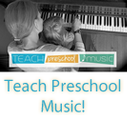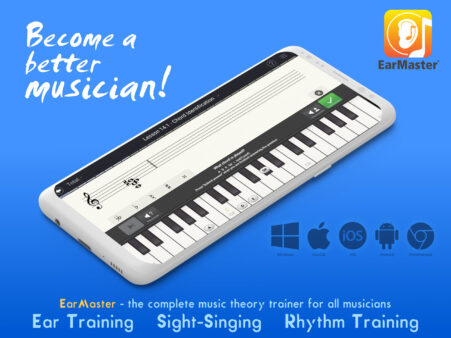There’s nothing quite like a conference to marry my loves of teaching and traveling! Our annual state music teachers conference was a joint venture with Missouri this year, and it was fabulous. We’re just wrapping up a weekend full of insightful sessions, inspiring performances, and invigorating fellowship. By the time the last session concluded I had a folder full of notes and handouts and about a hundred tabs open on my browser with resources and ideas to check out later!
As I reflect on all that I learned and consider how to utilize the various resources that were shared, I thought I’d compile a list of my Top Ten Takeaways for anyone else who might find them inspirational and helpful:

1. Take time to ponder the future of the profession. Our opening session titled “Innovating for the Future” included a panel with renowned leaders in the field of music education – Dr. Jennifer Snow, CEO and Executive Director of the Frances Clark Center; Dr. Courtney Crappell, long-time columnist for the American Music Teacher magazine and Dean of UMKC; Andrea Miller, founder of Music Studio Startup; Dr. Curtis Pavey, UMKC Assistant Professor and Manager of Online Publications for the Frances Clark Center for Keyboard Pedagogy; Dr. Sara Ernst, Associate Professor at University of Oklahoma and Director of Teacher Engagement and programming for the National Conference on Keyboard Pedagogy; and Dr. Christopher Madden, UMKC Assistant Professor and co-author of the Technique through Repertoire books. They were tasked with finishing the statement, “I believe in a future that…” I appreciated hearing the vision each of them shared for the future of music teaching as a profession and was challenged with a number of questions to consider for myself, my studio, and our community. Very thought-provoking!

2. Listen to more music from The Jopara Ensemble. This quartet of musicians from Paraguay shared a collection of native songs, many of which they’ve either composed or arranged themselves. It was delightful! Check out their YouTube channel for a taste of their music.

3. Inspire my students with stories about the Naughton Sisters. Whether working with students in a masterclass or performing their own concert, these twin pianists embodied what an unrelated session later in the conference dubbed, “Helping Students Develop the Courage to Command the Stage.” Their facial expressions and body movement alone kept me engaged, and their musical artistry was superb.

4. Check into the online courses offered by the Frances Clark Center. I didn’t even know these courses existed, but was especially interested to discover that they have a companion course for the Technique through Repertoire book that I’ve begun using in my studio.

5. Refer to the practice case study conducted by Robert Duke when instructing my students how to practice. Seventeen piano and piano pedagogy students were given a challenging 3-measure segment to learn in one session and then perform the following day. Their practice approach was recorded and from it a list of 8 Things Top Practicers Do Differently was derived. There was one strategy above all that seemed to differentiate the best practicers/performers from all the rest. Can you guess what it was? [Thanks to a session by Dr. Lucy Tan where she presented this research. I also appreciated this quote in relation to practicing: “Mental processes will remember what has been rehearsed the most, right or wrong.”]

6. Check out the Chordify app. Dr. Sara Ernst gave the keynote address on “Deep Learning: Strategies to Engage and Empower Music Students.” She identified five areas that encapsulate musical versatility for students: composition, improvisation, lead sheets & chord charts, ensemble playing, and sight-reading. Of the plethora of resources she referenced, the Chordify app grabbed my attention. Drawing from a collection of over 36 million songs on YouTube, the app or on-line player displays chord diagrams in sync with the video to enable musicians to play chords along with their favorite songs on their own instrument (piano, guitar, ukulele, or mandolin). Looks like a super cool and useful app for all sorts of purposes!

7. Explore the early level piano music of Florence Price. An informative session by Dr. Gjergji Gaqi highlighted the piano works of Florence Price, including some of her collections for beginning piano students. Several of her pieces immediately struck me as being excellent for rote teaching, and I was excited to learn that she has two books of piano teaching music for beginners – Volume 1 and Volume 2.

8. Incorporate simple ensemble playing into group classes this year. Dr. Meg Gray gave one of the most down-to-earth presentations of the whole conference! Her session was titled, “Not Your Average Piano Lesson” and in it she encouraged us to incorporate playing from lead sheets and utilize YouTube tutorials to help students play music that is of particular interest to them. I loved her ensemble idea and demonstration where she listed out the chords of a familiar song, then had one pianist play the bass line, another play a Root-5th-3rd (as a broken open chord) on each beat, another play the melody by ear, and the fourth play an obligato consisting of the root on beats 2 and 3 in higher registers with the beat 3 an octave higher than the beat 2. Granted, this group of piano teachers were able to pull off the activity instantaneously and it sounded lovely (click here to watch the video), but I think almost any group of students would also be able to achieve a musical result with a little bit of practice!

9. Explore the music of Brazilian composer Inah Lacaz Machado Sandoval. Dr. Gustavo Jose do Carmo has done a breath-taking amount of work to learn about this obscure composer and bring awareness to her extensive body of work, including over 150 solo piano compositions! Ranging from the equivalent of an RCM level 3 to level 10, the collection contains a wide variety of pieces for students of nearly all levels. I love learning about lesser-known composers and look forward to playing some of Sandoval’s music myself!

10. Continue to prioritize learning and growing as a piano teacher. I booked my lodging at an Airbnb that was just a few blocks from the conference venue, enabling me to walk to and from the sessions each day. Tucked into a weekend with gorgeous fall weather this made for a time that was not only packed full of learning, but was also a refreshing getaway. I am so grateful that I am able to take part in these opportunities to connect with music-teaching colleagues across the state (and beyond!) and benefit from their devoted and generous labors. Both I and my students are abundantly blessed because of them!
Please note: Some links above are affiliate links that enable us to receive a small commission from purchases made through them. We only recommend those that we find valuable for teaching and studio use. We are so grateful for the support of teachers and musicians who use our affiliate links to help offset the costs of running Music Matters Blog and providing free resources for music teachers!













Leave a Reply